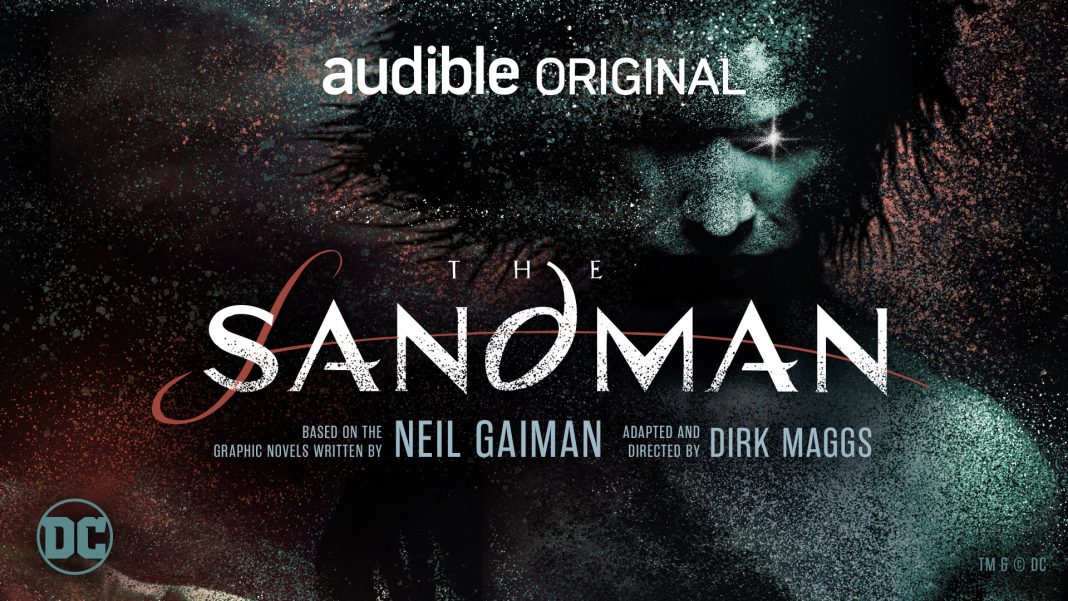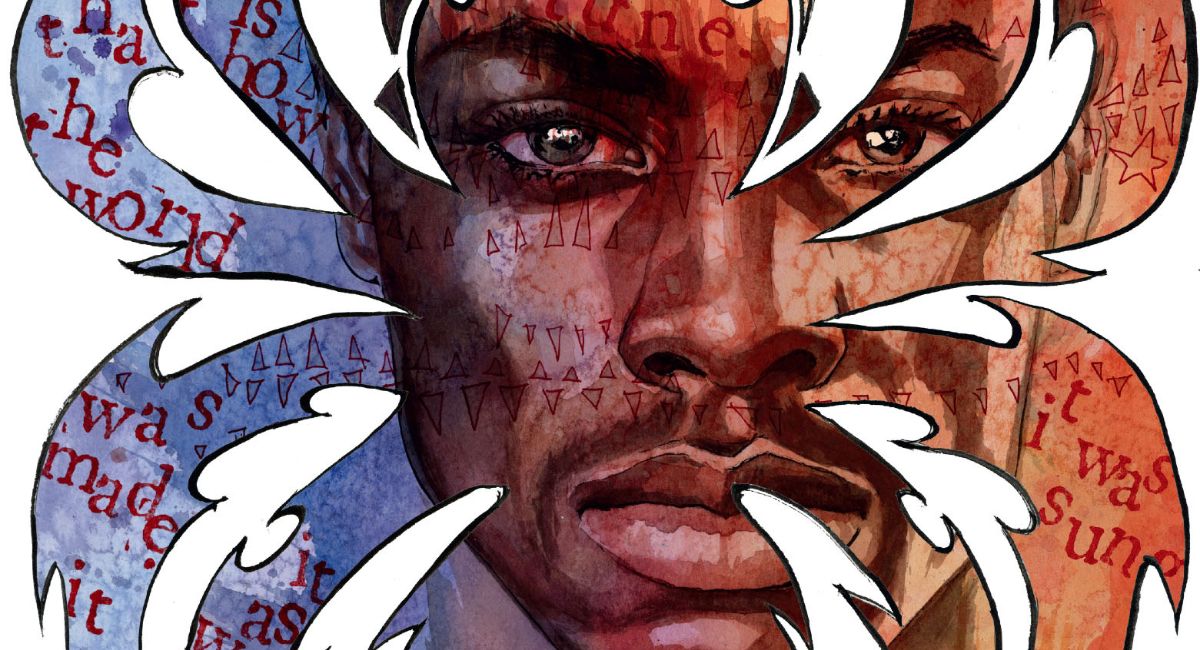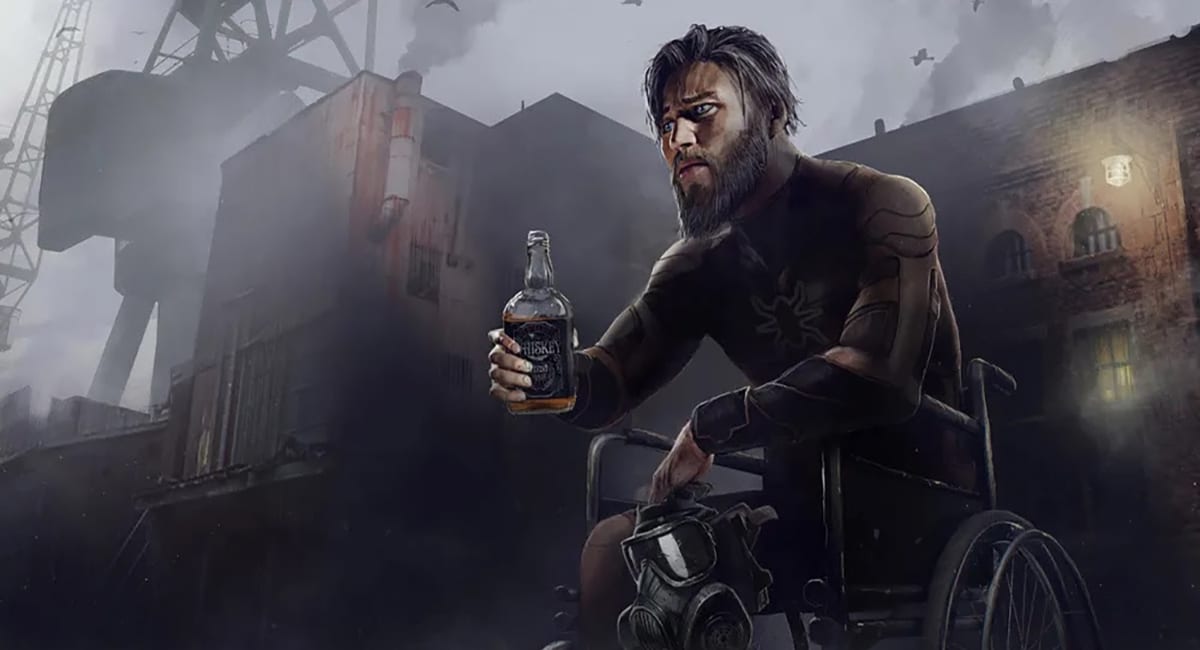It’s no secret that studios and producers have been trying to develop Neil Gaiman‘s The Sandman since it’s publication back in the early ’90s. While attempts over the years have ultimately failed, we now have two adaptations of the iconic graphic novel series coming to audiences of a new generation. We spoke with author Neil Gaiman, director Dirk Maggs, and actor James McAvoy about the Audible adaptation of The Sandman and what it was like transforming this graphic novel into a cinematic audio drama.
“I gave Dirk the original scripts,” Gaiman explained, when it came to adapting the story. “So Dirk got to read the instructions that I gave to the artist all those years ago. So I describe rooms, describe people talking about things. And very often that was what I wound up reading as a narrator, 33 years after I’ve written these lines, which were never expected to be read by anybody other than Sam Keith or Mike Dringenberg or Kelley Jones, or whoever I was writing them for. There’s no cuts. There’s no trims. If anything, what we’ve done is let things breathe a little bit more.”
The Audible audiobook spans 20 episodes and is about 11 hours. It adapts only the first three graphic novels of “Preludes and Nocturnes,” “The Doll’s House,” and “Dream Country.” Gaiman expressed the hope that eventually the entire collection of stories would be adapted all the way up to The Sandman: Overture. “By the time that we finish, it’ll be 100 or 120 hours of audio drama. But the idea is that we tell the whole thing, but we also get to treat it as an audiobook.”
Gaiman said that due to the time constraints that studios might have forced on adaptations in the past, he was glad that he and Maggs failed to get the project greenlit in the ’90s. There was no need for reshaping the story to fit a certain amount of hours. In most cases, the largest struggles were dealing with the number of characters that Gaiman had created in his massive story.
He jokes about breaking the air conditioning in the Audible studios in the UK due to the number of actors in one room or running out of American actors for the voices during the serial killer convention. “I’m proud of what Dirk has done,” mirthfully adding, “but, dear lord, there are a lot of parts.”
The time has come ⏳ Discover Dream's domain in @audible_com's THE SANDMAN, available now: https://t.co/4HIzp66r0K pic.twitter.com/TJYIaOkT3R
— DC (@DCComics) July 15, 2020
For Maggs, this has been a 28-year long journey since the time that the two first came together with the ambition of interpreting The Sandman. “Neil wasn’t Neil then, he wasn’t Neil Gaiman. Not so much,” he said. “But as Neil says, both he and I know a bit more now. And we have a bit more influence so we could bully our way through things that we wanted to do a certain way and we were able to do a better job overall, hopefully.”
The Sandman is undoubtedly one of Gaiman’s most notable works, and the intention with the Audible version was to create a very faithful adaptation to the original story. “For years, I’ve had people with seeing issues saying that they wish that they could read Sandman too, and so this is for them and for the rest of us.” He added, “I think a lot of the problems with adapting Sandman were that it was somewhat ahead of its time, in terms of what it would have demanded from the world.”
The story is not one that easily fits into boxes and the sheer volume of storytelling made it hard to fit into a two-hour movie script or even a traditional television show. “Sandman was always something that overflowed boxes and became its own thing,” Gaiman remarked.
It’s true that five or ten years ago, the venture of adapting The Sandman would still have been quite difficult. “You needed to get to a world in which long-form storytelling is an advantage rather than a disadvantage,” Gaiman articulated. “And the fact that we have 75 issues of Sandman, plus, you know, essentially 13 full books worth of material is a really good thing. It’s not a drawback.”
Telling Neil Gaiman’s stories through an audio medium is definitely not a new concept. Dirk Maggs has collaborated with Gaiman multiple times in the past and he is no stranger to producing audio dramas with the highest quality storytelling, acting, and direction. From adapting the comic book storylines of characters like Batman, Superman, and Spider-Man to Douglas Adams’ The Hitchhiker’s Guide to the Galaxy, Maggs is no stranger to the genre. Maggs adapted Gaiman’s Neverwhere in 2013 for BBC as a radio play, a drama that also starred James McAvoy as the lead.
A long time fan of Gaiman’s work, McAvoy takes on the challenging role of the enigmatic Sandman aka Morpheus. “I just love the worlds that [Gaiman] creates, his range is fantastic. It’s [a] quite scary and controversial world that he creates,” he said, emphatically. “But I knew that Dirk Maggs is not only somebody who’s just a great guy directing audio drama. He’s quite rock’n’roll and he’s got something very similar to Neil and I don’t know what that is, it’s just a certain sort of ‘fuck it’ attitude.”
He continued, “In radio drama where you are limited to just the audio and where you don’t have that visual leading you, you really need somebody to be bold and [Maggs] has such a deep understanding of Neil’s work, that I just knew was going to be a good marriage.”
In regards to working in the audio medium, Maggs talked not only about the flexibility but also the economics of the medium. “We can do an awful lot for a lot less money and a lot less people than you can do for any picture project and we can do it these days with digital technology to the same technical specifications,” he explained. “This is a very flexible medium, not only for the listener but also for us as creatives. The skill is in making it so that you are lost in it and you aren’t suddenly jarred by something that really doesn’t explain itself well.”
On the technical front, Maggs creates a real cinematic experience even in complicated scenes involving multiple voices. Without the aid of visuals, a more inexperienced director might leave the listener confused. But Maggs combines the aspects of writing in cinematic grammar (e.g. long shots, medium shots, close-ups) along with the layering of dialogue and sound design.
“If you’ve got a pair of earbuds in, which is probably the best way to listen to it, you’ll hear the actors are actually moving backward and forwards on a sort of widescreen in front of you,” he explains. Then with the added layers of music, effects, background noise — “This is a stereo mix of something that eventually maybe we’ll get into Dolby Atmos, so you can actually have it all around you.”
This gives the effect that you are immersed in the story and the scenes are playing out in front of you. The careful process of adding foley that normally would only be added into film adds depth and paints a picture for the audience. “Noises turn into pictures that you can infer an environment before you enter a room by what you hear before. And this is what makes the magic work. If I can mix it right. Hopefully, you don’t need an image to see a picture.”
On top of the fantastic sound design and editing, Audible’s adaptation of The Sandman brings sweeping descriptions and thoughtful narration. While some of these descriptions will seem new to long time fans, they have existed since Sandman has been around. Maggs describes the writing as beautiful and lyrical, adding that the benefit also came from hearing the narration in Gaiman’s own voice. “It’s Neil speaking with Neil’s voice from 32 years ago, and there’s a poetry to it, which is just glorious. It’s glorious.”
The Sandman is available now on Audible.








